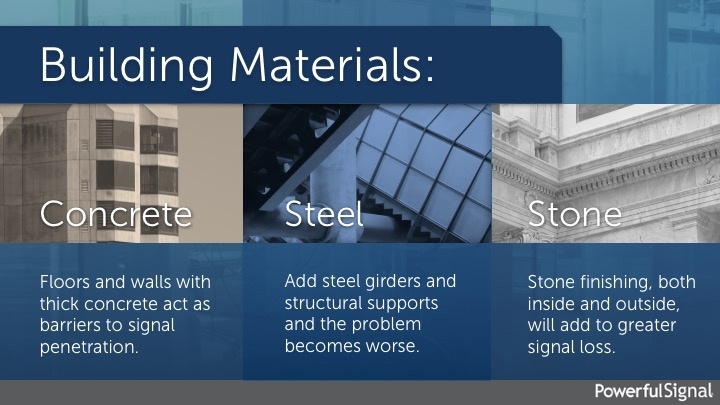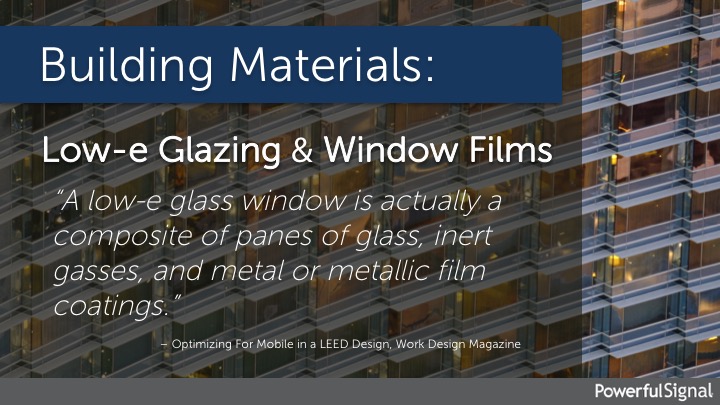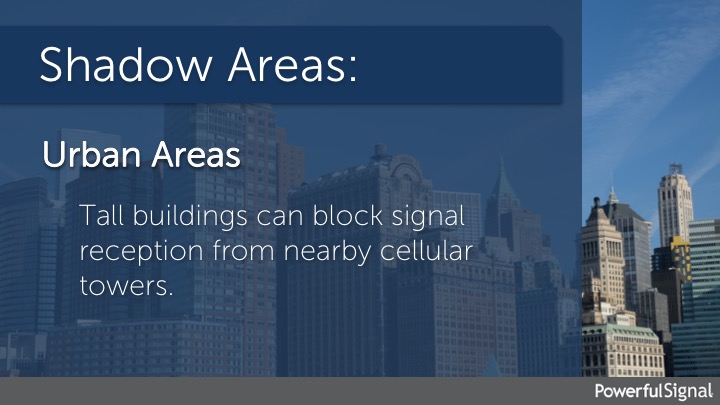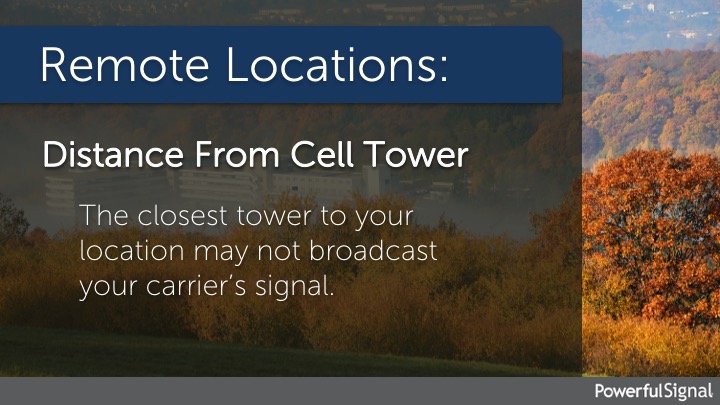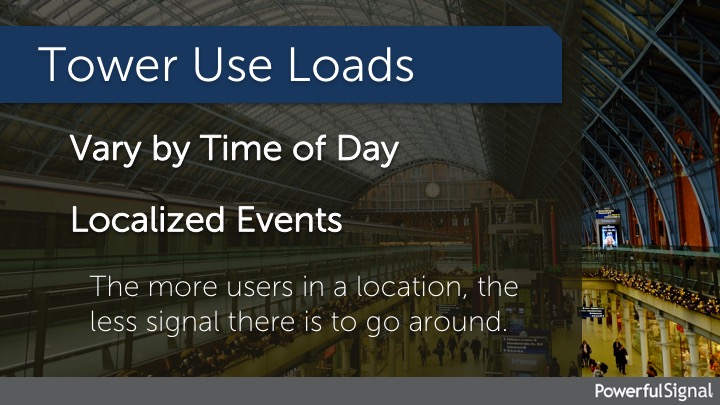Why don’t cell phones work in my building?
Posted by Kevin Taylor on Jul 14th 2017
Commercial passive DAS systems improve cellular reception indoors. A passive DAS system brings usable cell signal inside a building, often working within a hostile signal environment brought on by many different types of building materials.
So why does one building get strong, usable cell signal, while the building next to it is a cell signal disaster? Unfortunately there is no single answer to that question; there can be several major variables involved.
There are four main types of challenges that may have to be overcome:
- Building materials
- Shadowed areas
- Remote locations
- Tower use load
Building materials
Three of the biggest reasons for blocked or diminished cell signals in buildings are the use of concrete, steel, and stone construction materials. Virtually all modern buildings use these materials, and they all play a significant role in blocking cell signal reception. Here are some materials that can block cell phone signals.
Concrete
High-rise buildings employ concrete between floors, around elevator shafts, and for structural walls above and below ground. Many hotels and other high-traffic buildings use concrete not just for structural reasons, but also for noise dampening.
Steel
Steel is universally used to create the superstructure of commercial buildings. In large buildings, there is a significant amount of steel embedded within and supporting the concrete outer structure.
Steel also creates cellular signal issues in metal buildings. Buildings with metal sides and roofs are quite common in industrial and warehouse applications, and it’s almost guaranteed that cell signal problem will crop up inside them.
Stone
Stone is found extensively in very old buildings, and is also used as a facade in modern buildings. Many public buildings, such as state capitols and museums, have elaborate stonework, and stone can also be found on the exteriors of upscale buildings such as hotels and offices.
Low-E glass
Low-E glass deserves its own special mention. LEED-certified and other environmentally-friendly buildings make use of low-E glass to help control air conditioning costs.
Low-E glass stands in a class of its own when it comes to building materials. If concrete floors and steel girders don’t play havoc with the cell signal reception inside a building, low-E glass almost always will: The metallic films used in low-E glass significantly reduce the amount of cell signal entering a building.
Shadowed areas
Shadowed areas occur when some object in a large area blocks cell signal and creates an area of low or unusable cell signal. Shadowed areas frequently occur in both man-made and natural environments.
Urban environments
Urban areas are notorious for shadowing cell signals. A sea of office buildings, built of concrete and steel, create an obstacle course for cellular frequencies, creating an extremely challenging problem for both cellular carriers and subscribers.
Dense forests
Surprisingly, the beauty of nature can also create troublesome shadowed areas for cell signals. Thick forests, most often hardwoods, inhibit cell signals, especially when the leaves are out. You might notice an improvement in the winter, when the leaves drop, but the trees themselves are still a problem.
Remote locations
Remote cell tower locations are something we all struggle with, at least occasionally. When traveling in less-populated areas, you sometimes can’t get a signal because you’re too far away from the nearest tower.
Or you might have a home or cabin that is distant from the closest cell tower, but you can still make calls when you’re outside of the building. The outside signal might be weak, but there is enough usable signal to get the call through without problems. Now walk into the building: Adding an additional layer of building materials that block or inhibit cell signal takes you from usable outside signal to unusable inside signal. If you had started with strong outside signal, then you would likely have a decent chance of having something usable inside the building. Most the time, cell signals are not completely blocked by building materials; there is just a reduction of usable signal that occurs.
Tower use loads
When it comes to cell phone signals, nothing is guaranteed. A carrier’s cell phone tower may be close and giving you a strong signal for voice and data, but you still can drop a call unexpectedly.
Cellular carriers spend a great deal of time and money on load-balancing their networks, but each cell tower can only handle so many calls or so much data traffic. Think of a whole pie: The fewer people who want a piece of the pie, the bigger the slices can be; the more people who want a piece, the smaller the pieces have to get. And if too many people want a piece of pie, then someone is going to have to go without. Cell phone towers operate on a similar concept: The higher the user demand on the tower, the less signal there is to go around; if the demand gets too high, then users will experience dropped calls and stalled data.
Tower use loads can be at their peak during rush hour, especially when there are traffic problems and more calls are made to family members and business associates. Special events, emergency situations, and local disasters also create severe load-use issues on towers.
Summary
There are many factors that affect cell phone signal strength and the quality of cellular reception. We only touched on some of the main reasons here; there are many more. Over the last few years, demand on cellular devices have increased exponentially, as has the expectation of staying constantly connected.
Call Powerful Signal at 435-634-6800
…or receive a free custom quote using our online form. Over the past decade, Powerful Signal has fixed cell signal problems in thousands of large buildings in commercial, industrial, and public-sector applications. Let us help you stay connected with voice and 4G data, wherever you are.
This article is based on a presentation given by Kevin Taylor, President of Powerful Signal, at the June 2017 Building Owners and Managers Association (BOMA) International Annual Conference & Expo in Nashville, Tennessee.

